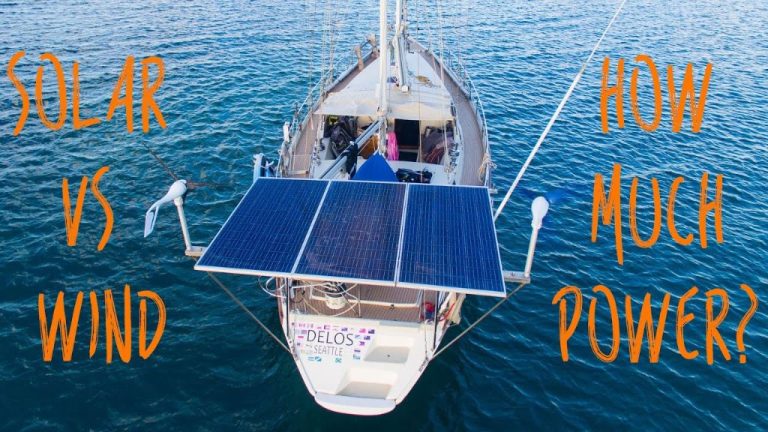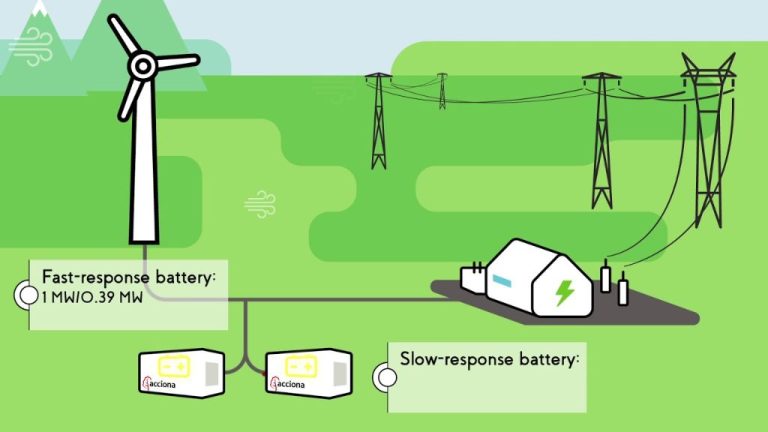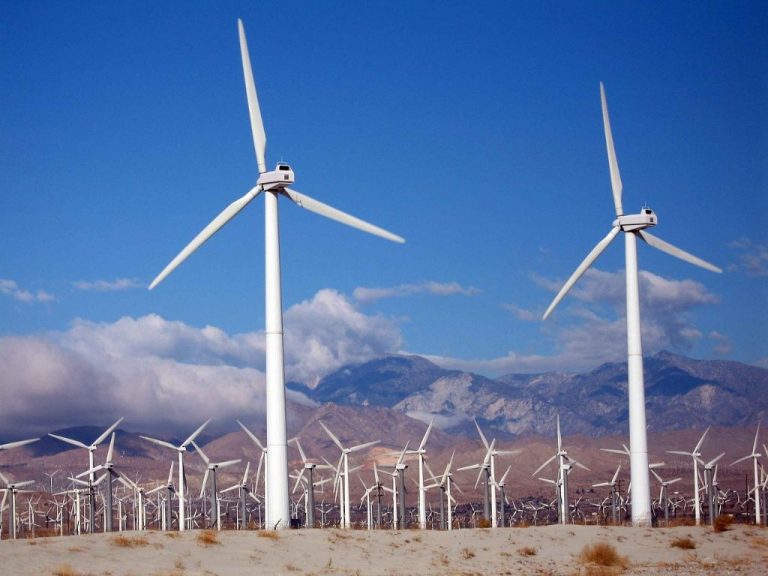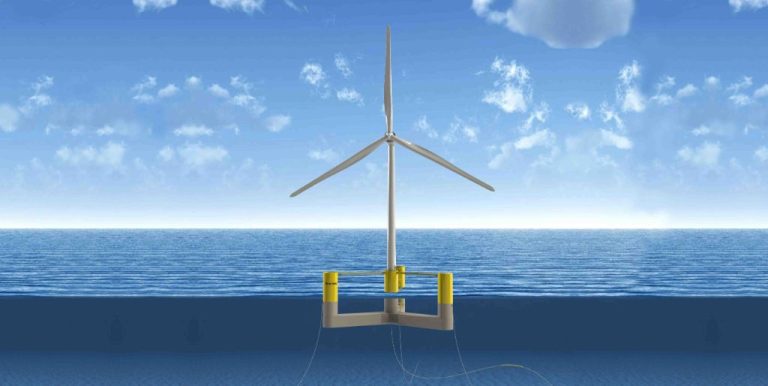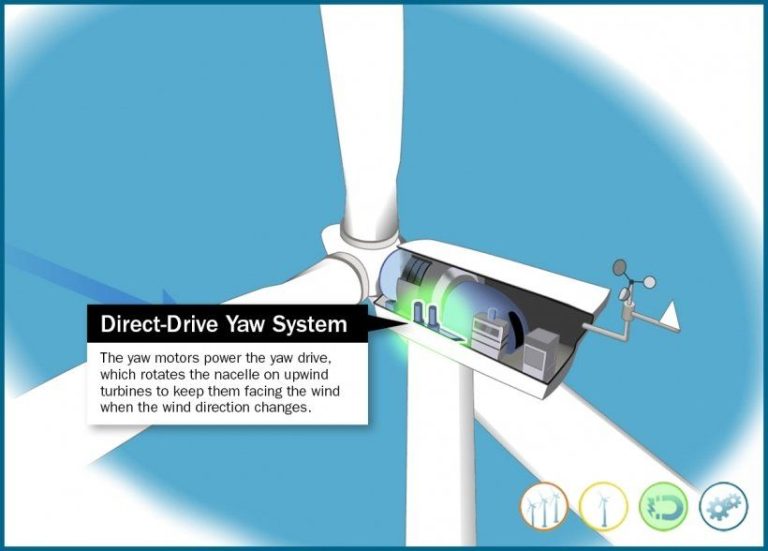Can Wind And Solar Power Be Stored?
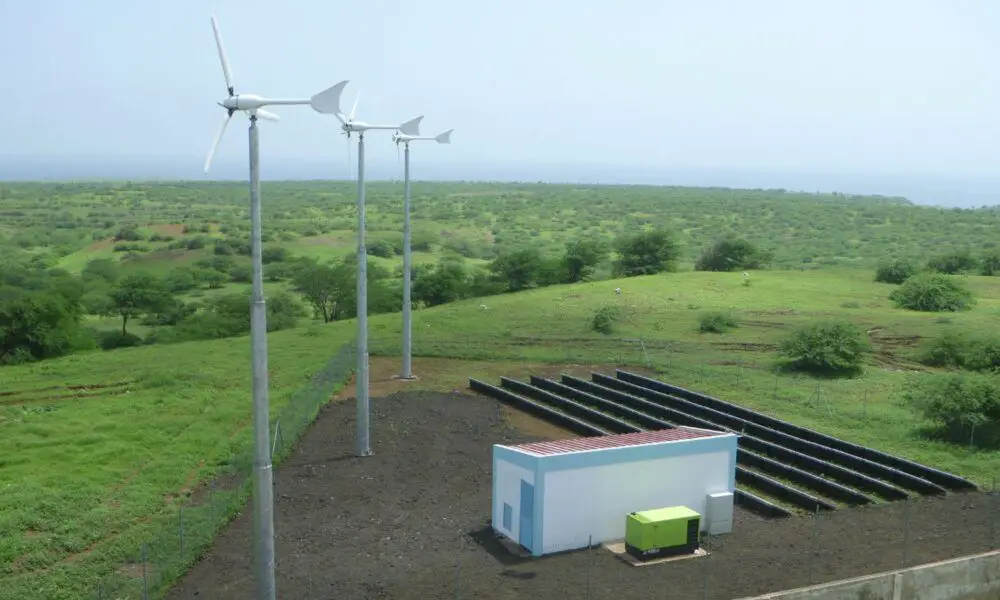
As the world moves towards renewable energy sources like wind and solar power, being able to store that energy has become increasingly important. Renewable sources like wind and solar are intermittent – they only generate electricity when the wind is blowing or the sun is shining. This makes matching energy supply with demand challenging. Energy storage provides a solution by capturing excess renewable energy when it’s generated and discharging it when it’s needed (Advanced Energy Storage Technologies and Their Applications …, 2013).
There are several technologies that can provide grid-scale energy storage for renewable sources. These include batteries, pumped hydro storage, compressed air energy storage, flywheels, thermal storage, and hydrogen storage. This article will provide an overview of these various storage solutions.
How Wind and Solar Power Work
Wind turbines convert the kinetic energy of wind into mechanical power to drive an electricity generator. Wind flows over the blades causing rotation, turning a main shaft connected to a generator to create electricity (1). Solar panels (photovoltaics) contain cells made of semiconducting materials that convert sunlight directly into electricity through the photovoltaic effect. Photons in sunlight knock electrons free from atoms in the solar cells, generating an electric current (2).
The variable nature of wind speeds and sunlight intensity creates intermittency in generation output from wind and solar. Wind generation can vary greatly within a day and seasonally as weather patterns change. Solar generation drops at night and fluctuates with passing clouds. This intermittency requires grid management to balance generation with load demands and backup sources like batteries or fossil fuels (3).
Sources:
(1) https://www.energy.gov/eere/wind/how-do-wind-turbines-work
(2) https://www.climatecentral.org/news/wind-solar-power-101
(3) General knowledge/analysis
Batteries
Batteries are one of the most common ways to store electricity generated from wind and solar power. Batteries work by converting electricity into chemical energy and then converting it back into electrical energy when needed. This allows excess renewable energy to be captured and used later when demand increases.
Lithium-ion batteries have become the dominant battery technology for grid-scale storage due to their high energy density, high efficiency, and fast response times (NREL, 2019). Flow batteries like vanadium redox are also being used for long-duration energy storage. They can be scaled up to store large amounts of energy by using bigger electrolyte tanks (Power Sonic).
Some examples of large battery storage projects include the 400 MWh Hornsdale Power Reserve in Australia, the 250 MW/250 MWh Moss Landing project in California, and the 100 MW/129 MWh Manatee Energy Storage Center in Florida. These projects help to balance supply and demand on the grid by charging when renewables are abundant and discharging when more power is needed.
Pumped Hydro Storage
Pumped hydro storage plants store energy by pumping water from a lower reservoir to an upper reservoir when electricity demand is low. The upper reservoir acts as a battery, holding potential energy in the form of water. When electricity demand is high, water is released from the upper reservoir through a turbine to generate electricity. The water flows downhill into the lower reservoir, producing electricity via the turbine along the way.
Pumped hydro requires specific geographic features to work effectively. The two reservoirs must be located at different elevations, with the upper reservoir at a higher elevation than the lower. The greater the height between the reservoirs, the more potential energy can be stored. Suitable sites for pumped hydro are often found in mountainous areas or locations with existing hydropower dams and reservoirs.
The Bath County Pumped Storage Station in Virginia is one of the largest pumped hydro storage facilities in the world, with 3,003 MW of capacity. Completed in 1985, Bath County can generate electricity for up to 10 hours. Another example is the Dinorwig Power Station in Wales, which has 1,800 MW of capacity and can go from zero to 1,650 MW in just 16 seconds to manage peaks in demand.
Compressed Air Storage
Compressed air energy storage (CAES) works by using excess electricity to power an electric motor that compresses air into an underground cavern or above-ground storage tank. The compressed air acts as a reservoir of potential energy that can be released on demand to turn a turbine and generate electricity when needed (Compressed-air energy storage, 2023).
Some of the key advantages of CAES include:
- Ability to store large amounts of energy efficiently for long durations (Compressed Air Energy Storage (CAES), n.d.).
- Low capital costs compared to batteries (Compressed-air energy storage, 2023).
- CAES plants can respond quickly to sudden spikes in electricity demand (Compressed-air energy storage, 2023).
Some disadvantages and challenges include:
- Geological limitations on suitable underground storage caverns (Compressed-air energy storage, 2023).
- Energy losses during compression and expansion reduce efficiency (Compressed Air Energy Storage (CAES), n.d.).
- Requires access to natural gas or other fuel source to reheat compressed air upon expansion (Compressed-air energy storage, 2023).
Notable CAES projects include a 110MW facility built in Alabama in 1991, which was the first utility-scale CAES plant in the world. More recently, a 315MW CAES plant was completed in Germany in 2018 (Compressed-air energy storage, 2023). Overall, CAES represents a proven and scalable solution for large-scale energy storage to support renewable power.
Flywheels
Flywheels store energy in the form of kinetic energy by accelerating a rotor (flywheel) to a very high speed. As the flywheel spins, rotational energy is maintained in the system and can be tapped as needed to generate electricity. Flywheels offer very rapid response times, as the rotational energy is already present in the system.
Some key advantages of flywheels are their fast response time and ability to quickly store or discharge energy. This makes them well suited for smoothing out short-duration grid fluctuations and providing frequency regulation (1).
One example of a flywheel energy storage project is the 20MW system installed by Amber Kinetics in New York to help regulate frequency on the local grid (2). Their long-duration flywheels can provide 4+ hours of storage.
Thermal Storage
Thermal energy storage (TES) involves storing thermal energy for later use. TES provides a way to capture excess heat or cold and use it hours, days, or months later for heating and cooling needs. This allows buildings to shift when energy is used to times with lower demand and prices. TES also enables better integration of renewable energy and makes energy systems more resilient.
There are two main types of TES systems: molten salt and ice storage. In molten salt storage, salts like sodium nitrate or potassium nitrate are heated to high temperatures. The molten salt can retain the thermal energy for long periods with minimal losses. The hot molten salt is then circulated through a heat exchanger to produce steam to generate electricity on demand. Ice storage systems work similarly, but use chillers at night to produce ice that can be used for cooling during peak daytime hours.
Notable TES projects utilizing these methods include the 110 MW molten salt system at the Crescent Dunes solar project in Nevada and the 5000 ton ice storage system at the Navy Pier in Chicago. TES allows these facilities to better align energy supply and demand while incorporating renewable power.
Hydrogen Storage
Excess electricity from renewable sources like wind and solar can be used to produce hydrogen through a process called electrolysis. This involves splitting water (H2O) into hydrogen and oxygen using an electrolyzer [1]. The resulting hydrogen can then be stored and used later when electricity demand is high.
Hydrogen acts as a chemical battery that can store energy for long durations, making it a useful form of storage for renewable energy. The stored hydrogen can then be converted back into electricity using fuel cells, or used as a transportation fuel for hydrogen vehicles [2]. Hydrogen is a versatile energy carrier that opens up new possibilities for integrating renewables onto the grid.
Some real-world power-to-gas projects demonstrating hydrogen storage include:
- The HYSTOCK project in Germany which combines a 1 MW electrolyzer with hydrogen storage tanks [3].
- The H2Future project in Austria which uses a 6 MW electrolyzer to produce hydrogen from excess wind power.
- The REFHYNE project in France which produces hydrogen from solar PV and biomass.
Microgrids
Microgrids are small, local power grids that can independently operate and disconnect from the larger grid during power outages (An Introduction to Microgrids and Energy Storage, www.energy.gov). They can integrate renewable power sources like solar and wind with energy storage, providing resilience and reliability by powering small communities even when the wider grid goes down.
Microgrids have several key advantages when it comes to resilient renewable energy storage:
- They can isolate from grid disturbances and operate autonomously using local generation and storage (Microgrids, www.c2es.org). This makes them more reliable during emergencies.
- They optimize renewable sources by balancing generation and load locally.
- Energy storage helps maximize the value of renewable generation assets.
- Microgrids support critical facilities like hospitals, emergency services and military bases.
There are many examples of successful microgrid projects integrating renewable storage:
- The Santa Rita Jail microgrid in California combines a 1.2 MW solar array with a 1.0 MW / 2.3 MWh battery system.
- The SPIDERS microgrid at Fort Carson Army Base has 4.6 MW of solar plus a 500 kW / 1 MWh battery.
- The Borrego Springs microgrid uses a 15 MW solar farm, two large batteries and diesel generators to power the community.
Microgrids demonstrate how renewable power generation from solar and wind can be stored locally to provide resilience and reliability off the centralized grid.
Conclusion
In summary, there are several promising storage technologies for renewable wind and solar power, each with their own advantages and disadvantages. Batteries, especially lithium-ion, provide portability and modularity but can be expensive. Pumped hydro storage offers large-scale storage capabilities but requires specific geographical conditions. Compressed air energy storage provides long duration storage while flywheels offer fast response times. Thermal storage like molten salt can retain heat to continue generating electricity when the sun goes down. Converting renewable electricity to hydrogen allows for long-term storage and grid management. Microgrids with on-site storage help mitigate intermittency issues.
Looking to the future, advancements in energy storage technology will be key to enabling higher penetrations of renewable energy on the grid. Cost-effective, long-duration grid-scale storage will be needed to make wind and solar more flexible and dispatchable. New battery chemistries, pumped hydro, and hydrogen storage all show promise in addressing renewable intermittency at scale. However, continued research, demonstration projects, and policies that incentivize storage will be critical to unlocking the full potential of renewable energy.

